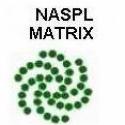ASA Rules A TV Ad for The People’s Postcode Lottery Did Not Breach BCAP Code Rules 18.5 (Lotteries)
ASA Ruling on Postcode Lottery Ltd t/a People’s Postcode Lottery
Ad description
A TV ad for The People’s Postcode Lottery, seen on 22 November 2023, featured Emma Willis in a dressing room. The logo for The Voice was visible in the dressing room mirror, along with a large “V” on the wall next to the mirror. She said “Right now, there’s only one question you should be asking. Is your door in the draw?”
She was then shown walking through a suburban neighbourhood and continued “People’s Postcode Lottery is giving away its biggest ever prize fund. 17.3 million pounds … simply sign your door up with your postcode to see what it could win you. With a share of 17.3 million to be won there really is only one question to ask yourself, is your door in the draw?”
Issue
The complainant challenged whether the ad include an individual who was likely to be of strong appeal to those under 18 years of age, and therefore breached the Code.
Response
Postcode Lottery Ltd said they did not believe Emma Willis was someone who had a strong appeal to children or young people, or whose example was likely to be followed by those aged under 18 years.
They referred to CAP and BCAP Advertising Guidance ‘Gambling and lotteries advertising: protecting under-18s’ which categorised individuals with direct connections to under-18s through their role, like children’s TV presenters or film stars, as “high risk”. They acknowledged that Ms Willis had presented the TV programme ‘The Voice Kids’, which featured under-18s singing, but did not believe that the programme itself was likely to be of strong appeal to children, or that she was a children’s TV presenter. They emphasised that a programme featuring children did not necessarily appeal to them; they highlighted that parenting programmes would likely feature children, but would not be likely to appeal to them.
They provided Broadcaster’s Audience Research Board (BARB) data for ‘The Voice Kids’ and ‘The Voice’, as well as four other TV programmes Ms Willis had recently presented. They said that the data demonstrated these TV programmes were not of strong appeal to children.
They also supplied a demographic breakdown of her social media followers, which they believed showed her participation in such programmes had not resulted in her being viewed in an aspirational or influential way by those under-18. They said that, of her 1,973,280 followers on Instagram, only 0.7% were between the ages of 13 and 17 years, which was equal to 13,812 people. They also advised that her Facebook account had 672,121 followers and only 0.2% of those were aged between 13 and 17, which equated to 1,344 people. They said that they were unable to provide age demographics for her X (formerly known as Twitter) account but believed that the proportion of under-18s on that platform would be similar to Instagram and Facebook. They also emphasised that the social media content posted by Ms Willis was adult-orientated and promoted her TV appearances, as well as other paid-for advertising for adult-focused brands.
Furthermore, they referred to two previous ASA Rulings in which individuals, whose profiles they considered were similar to that of Ms Willis had not been determined to be of strong appeal to those under 18.
Clearcast did not believe Ms Willis was of strong appeal to those under 18. They acknowledged that she was a widely recognised TV personality but explained that the vast majority of her roles were targeted at adult audiences. They said they were satisfied by the BARB data and her social media follower demographics, which demonstrated that she did not have a large following of under-18s.
Assessment
Not upheld
The BCAP Code stated that marketing communications for lottery products must not be likely to be of strong appeal to children or young persons, especially by reflecting or being associated with youth culture. They must not include a person or character whose example was likely to be followed by those aged under 18 years or who had strong appeal to those aged under 18. The ASA expected advertisers to provide evidence that they had identified what persons or characters were generally known for outside the context of an ad, and had used appropriate sources of data and information to assess their likely level of appeal to under-18s. We therefore assessed whether Ms Willis was likely to appeal to under-18s based on her TV personality profile, as well as her social media profile.
Ms Willis was a presenter who appeared in a number of different TV programmes, as well as other media, such as radio. We understood that she presented several programmes associated with the show ‘Big Brother’ throughout her career, as well as co-hosting a Sunday morning radio show on Heart Radio. However, we considered that the content of those programmes was primarily aimed at adult audiences, and in any case, because her work on both ‘Big Brother’ and her radio show concluded in 2018, we considered that her association with those shows was not particularly relevant at the time the ad was broadcast.
More recently, Ms Willis presented the reality TV programmes ‘The Circle’ in 2019 and 2021 and ‘Cooking with the Stars’ in 2021 to 2023. Contestants in ‘The Circle’ communicated to each other exclusively via a social media platform and based on their interactions, each player would be ranked by other contestants, with the aim of being voted most popular. ‘Cooking with the Stars’ saw several celebrities paired with a professional chef to compete against each other in a variety of different cooking challenges. Again, we considered that the content of those programmes was adult-orientated and likely would not strongly appeal to children, which was reinforced by viewing data of the most recent series of each show taken from BARB. The data did not indicate that either programme had a significant child audience and as such, we considered the data did not indicate Ms Willis was of strong appeal to children.
We understood that, in 2023, Ms Willis also appeared in the programme ‘Delivering Babies’, a documentary in which Ms Willis trained on a maternity ward and had, on occasion, acted as a guest presenter of the daytime television show ‘This Morning’. We considered that the content of those programmes was not of inherent strong appeal to children and that the BARB data supplied to us by The People’s Postcode Lottery reinforced that. That data did not show that those programmes had a significant child audience, and we therefore considered those programmes did not demonstrate Ms Willis was of strong appeal to children.
Ms Willis had also presented the singing reality TV competition ‘The Voice’ since 2014 and ‘The Voice Kids’ since 2017. Most recently, we understood that ‘The Voice’ was shown on Saturdays at 8 pm between November and December 2023 and ‘The Voice Kids’ was shown on Saturdays at 7.30 pm in July 2023. We understood those time slots were typically considered to be suitable for family viewing, and furthermore, that Ms Willis herself had expressed that the show was ‘Saturday night family viewing’ and that her own young children enjoyed the show. Additionally, Newsround, a BBC news programme for children, had published a number of articles about ‘The Voice’ which demonstrated they considered it was of interest to children. Whilst we understood that the programmes were not specifically made for children, we considered that the programmes had a broad demographic appeal and that they attracted a number of children to watch them. Furthermore, we noted that the ad made a direct link between Ms Willis and her presenting of the TV programme franchise ‘The Voice’. The ad showed Ms Willis in a dressing room which prominently featured ‘The Voice’ logo, as well a large ‘V’ stylised in the typography of the logo. As such, we considered that viewers under the age of 18 who watched ‘The Voice’ or ‘The Voice Kids’ would likely recognise Ms Willis in the ad as being the presenter of the show.
We assessed the BARB data supplied by the advertiser in relation to those two programmes to ascertain their appeal among children. The data showed that, proportionally, they were much more popular with older audiences aged 55 and above. Furthermore, whilst we noted that Ms Willis presented the programmes, we understood that the focus of the programme was on both the contestants and judges, and as such, we did not consider her role in the programmes had led to her being viewed in an aspirational or influential way by under-18s. Consequently, whilst we acknowledged that the programmes were family entertainment and that children who watched ‘The Voice’ or ‘The Voice Kids’ would likely recognise Ms Willis in the ad, we considered her appearance in those programmes did not make her of strong appeal to under-18s.
We next analysed Ms Willis’ social media profile, including her follower demographics and the content of her posts. Ms Willis was active on Instagram, Facebook and X. We noted that she had 1,973,280 followers on Instagram, 1,300,000 followers on X, and 672,121 followers on Facebook. We then assessed the number of under-18s following those accounts; 0.7% of her followers on Instagram were between the ages of 13 and 17, which equated to 13,812 individuals, and 0.2% of her followers on Facebook were between the ages of 13 and 17, which equated to 1,344 individuals. We therefore considered that both the proportion and the absolute number of those aged between 13 and 17 following Ms Willis on those social media platforms were not significant and did not suggest she had a strong appeal among that age group. However, we noted that those figures did not include any individuals under the age of 13, and, therefore, considered the number of children following Ms Willis was likely larger than the figures provided to us. However, given that the number of followers aged between 13 and 17 was low, we considered that the number of those under 13 who were following Ms Willis was likely not significant, especially taking into account that those aged under 13 were less likely to have a social media account than those aged between 13 and 17. Furthermore, we were not supplied with a demographic breakdown of her followers on X due to the constraints of the platform’s reporting measures. Nevertheless, we considered that the number of individuals under the age of 18 on X would be similar to that of Instagram and Facebook; particularly, in view of the typical demographics of X, which we understood from Ofcom data, was not particularly popular among younger audiences. As such, we were satisfied that the number of under-18s following Ms Willis on social media was low and not indicative of her strong appeal to children or young people.
Furthermore, we considered the endorsement deals and other commercial partnerships held by Ms Willis. We understood that she had a commercial relationship with Gilette Venus, Oral B, Marks and Spencer, and Absolute Collagen. We considered that those were adult-focused brands which were unlikely to have been popular with under-18s and reinforced the impression that Ms Willis likely did not have a strong appeal among under-18s.
Because we considered that Ms Willis did not demonstrate a strong appeal to under-18s through her TV personality profile or her social media profile, we concluded that the ad was not of strong appeal to children or young persons.
We investigated the ads under BCAP Code rules 18.5 (Lotteries), but did not find them in breach.
Action
No further action necessary.
BCAP Code
SOURCE: The Advertising Standards Authority Ltd. (ASA).
Tags: Advertising Standards Authority Ltd. (ASA), People's Postcode Lottery, Adverticing
























